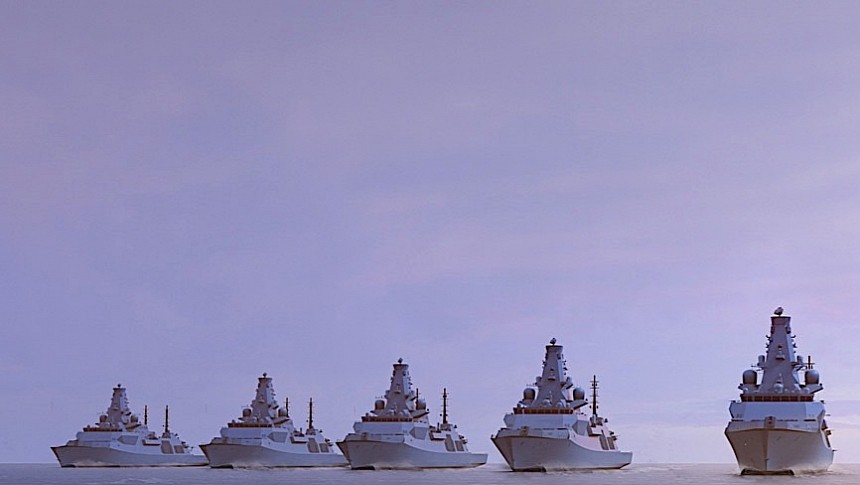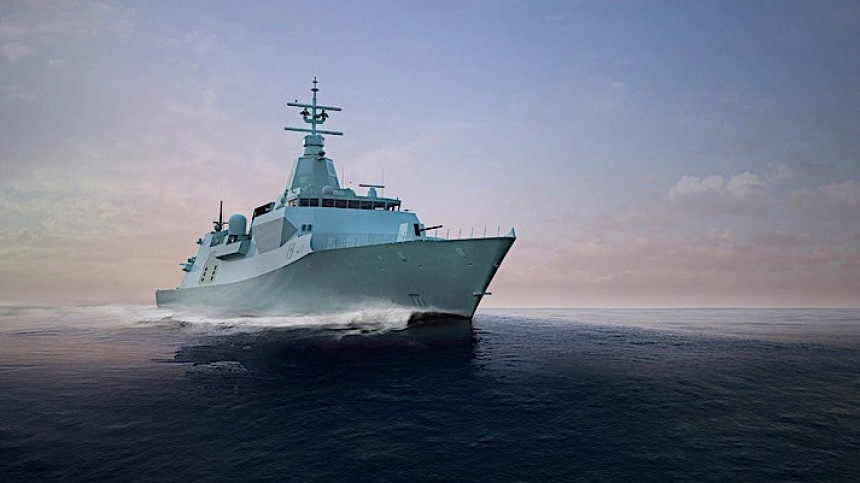Several modernization programs are currently being run by the Royal Navy, but few of them are as high-profile as the one centered around the new Type 26 frigates. This one is so important, in fact, that the launch of one of them even had a British royal use a plasma cutting machine to kick off the build.
Last time we heard anything about the Type 26 program was about two years ago, when Prince William kicked off the build of a ship in this family called HMS Belfast. It was the third of its kind to enter production back then, following the HMS Glasgow and HMS Cardiff. The fourth ship of the family, the HMS Birmingham, entered production at the BAE Systems’ Govan shipyard in Glasgow this week, as per the defense contractor.
The Type 26 is meant as the replacement for the Type 23, a kind of ship that has been in service ever since the end of the 1980s. Their main role will be to fight off enemy submarines, but they will also pack a punch against aerial threats. Additionally, they can be converted to be used as humanitarian aid transports and medical ships.
The frigates will be packed full of weapons, including the Sea Ceptor missile defense system and a 5-inch medium caliber gun. Detection and awareness are ensured by means of a medium-range radar for surface and air, and a towed array sonar for underwater threats.
The ships in the Type 26 frigate class displace 6,900 tons and are almost 150 meters (492 feet) long. Power for them to operate comes from several sources, including a Rolls-Royce gas turbine, four mtu diesel generators, and two electric motors. With them running at full throttle, any of these ships is capable of reaching speeds of 30 mph (48 kph).
The Type 26 can cover a distance of over 13,000 km (8,000 miles) on a single outing. It can host a crew of up to 208 people, and there is even enough room on the ship to fit it with two helicopters if need be.
The HMS Birmingham, which entered production this week, will be followed by four others in the shipyard: the HMS Sheffield, HMS Newcastle, HMS Edinburgh, and HMS London. All five of them are worth a combined £4.2 billion, which is about $5.2 billion at today’s exchange rates.
Aside from the British Royal Navy, the militaries of Australia and Canada are scheduled to get the Type 26 too, counting nine and 15 ships, respectively.
Despite work being pretty advanced with the first three ships that have been in production for a while now, the Type 26 is not expected to enter military service sooner than 2028.
The Type 26 is meant as the replacement for the Type 23, a kind of ship that has been in service ever since the end of the 1980s. Their main role will be to fight off enemy submarines, but they will also pack a punch against aerial threats. Additionally, they can be converted to be used as humanitarian aid transports and medical ships.
The frigates will be packed full of weapons, including the Sea Ceptor missile defense system and a 5-inch medium caliber gun. Detection and awareness are ensured by means of a medium-range radar for surface and air, and a towed array sonar for underwater threats.
The Type 26 can cover a distance of over 13,000 km (8,000 miles) on a single outing. It can host a crew of up to 208 people, and there is even enough room on the ship to fit it with two helicopters if need be.
The HMS Birmingham, which entered production this week, will be followed by four others in the shipyard: the HMS Sheffield, HMS Newcastle, HMS Edinburgh, and HMS London. All five of them are worth a combined £4.2 billion, which is about $5.2 billion at today’s exchange rates.
Aside from the British Royal Navy, the militaries of Australia and Canada are scheduled to get the Type 26 too, counting nine and 15 ships, respectively.
Despite work being pretty advanced with the first three ships that have been in production for a while now, the Type 26 is not expected to enter military service sooner than 2028.









